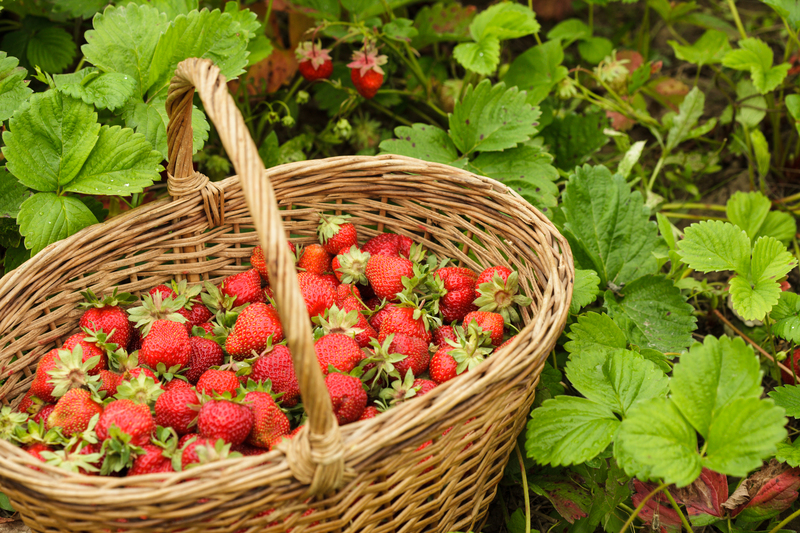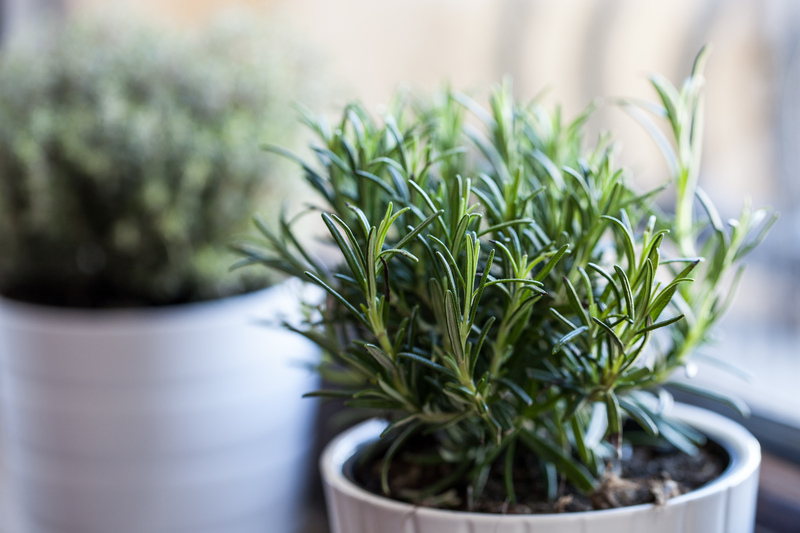Winterizing Your Garden Plants: Expert Tips
Posted on 22/08/2025
Winterizing Your Garden Plants: Expert Tips for a Healthy Garden
As the temperatures begin to drop and the days grow shorter, gardeners everywhere turn their attention to preparing their beloved plants for the cold months ahead. Winterizing your garden plants is a critical step to ensure vibrant blooms and lush growth return in the spring. In this comprehensive guide, we'll explore expert advice on how to ready your garden for winter, including effective strategies for protecting your perennials, annuals, shrubs, and trees. Whether you're a seasoned gardener or a novice, these proven tips will help you safeguard your landscape from the harshest winter conditions.

Why Winterizing Plants Is Essential
Winter can bring about snow, frost, freezing temperatures, and drying winds--all of which pose challenges for your garden plants. While some species have adapted to survive chilly weather, most will benefit greatly from a little extra care from you. Proper winterizing can:
- Prevent root and shoot damage due to freezing.
- Reduce water loss from harsh winter winds.
- Shield delicate plants from heaving soil and frost cracks.
- Protect against pests and diseases that proliferate in damp, cold settings.
- Encourage stronger, healthier growth come springtime.
Neglecting to prepare your garden for winter weather can lead to plant loss, increased disease, and more work when the warmth returns. The good news? Winterizing garden plants doesn't have to be complicated.
When Should You Start Winterizing Your Garden?
Timing is everything when it comes to winterizing. The ideal period typically falls after the first light frost but before the ground is frozen solid. This window allows your plants to acclimate to cooling temperatures while still absorbing moisture and nutrients from the soil.
Key Timing Tips:
- Late Autumn: Begin when daytime temperatures consistently hover below 50?F (10?C).
- Check Your USDA Hardiness Zone: Regional climates affect the optimal timing for winterizing garden plants. Consult your zone guide for best practices.
- Observe Your Plants: Look for signs of dormancy such as yellowing leaves or slower growth before beginning major prepping tasks.
How to Winterize Garden Plants: Step-by-Step
1. Clear and Clean the Garden
Start with a good autumn cleanup. Remove dead foliage, spent annuals, and fallen branches. This vital step helps prevent overwintering pests and diseases, making it an essential foundation for winter plant care.
- Pull and compost annuals that won't return in spring.
- Cut perennials back--unless they offer winter interest or food for wildlife.
- Rake up leaves and debris to reduce fungal diseases.
2. Pruning: To Cut or Not to Cut?
Not all plants benefit from fall pruning. For some species, late pruning can expose tender growth to severe weather, while others rely on trimming to prevent disease.
- Prune deciduous trees and shrubs after leaf drop but before any hard freeze.
- Leave ornamental grasses and seed heads for winter interest and to feed local birds.
- Avoid pruning spring-flowering shrubs like forsythia or lilac, as you might remove next year's blooms.
3. Mulching: Your Plant's Winter Blanket
Applying mulch is one of the best ways to protect your garden plants in winter. Mulch serves as an insulator, maintaining even soil temperature and moisture. Here's how to get the most benefit:
- Use organic mulches like straw, leaves, or shredded bark.
- Apply 2-4 inches of mulch around (but not touching) plant crowns.
- Wait until after a hard frost so rodents don't nest underneath the mulch layer.
4. Watering Before the Freeze
A common winterizing mistake is neglecting to water before the freeze sets in. Dry plants are far more susceptible to winter kill.
- Give trees, shrubs, and perennials a deep watering in late fall, especially if the season was dry.
- After watering, disconnect hoses, drain irrigation lines, and store watering cans to avoid cracking.
5. Protecting Tender and Container Plants
Delicate plants and potted garden specimens need special consideration, as their roots are more exposed to temperature swings. Here are expert recommendations:
- Move containers indoors to a sheltered location like a garage or basement, if possible.
- Insulate outdoor pots by wrapping them in bubble wrap, burlap, or blankets.
- Group pots together to create mutual warmth and wind protection.
- For in-ground tender perennials, cover them with a cloche, frost cloth, or even an overturned crate.
6. Tree and Shrub Care for the Winter Months
Young trees and shrubs are especially vulnerable. Taking extra steps now can prevent bark splitting and critter damage.
- Wrap trunks of young trees with tree wrap or plastic to prevent sunscald and pest damage.
- Use hardware cloth or mesh to shield stems from rabbits and rodents.
- Apply an extra layer of mulch around the root zone to buffer temperature fluctuations.
7. Preparing Evergreen Plants for Winter Chill
Unlike deciduous plants, evergreens retain their leaves and needles throughout winter. They can dry out when soil freezes and water becomes scarce.
- Water evergreens deeply in late autumn.
- Apply anti-desiccant spray to reduce winter windburn.
- If possible, erect a windbreak using burlap screens to lessen exposure.
Special Considerations: Winterizing Fruit and Vegetable Gardens
Protecting Perennial Fruits
Raspberries, blueberries, and strawberries benefit from winterizing practices tailored to their needs:
- Cover strawberry beds with straw mulch once the ground is frozen.
- Mulch around berry shrubs to prevent freeze-thaw cycles that can lift roots.
Vegetable Beds
After your last fall harvest, it's wise to:
- Remove spent plants and till the soil lightly.
- Plant a winter cover crop such as rye or clover to suppress weeds and enrich soil for next season.
- Protect winter vegetables with row covers or cold frames for an extended harvest.
Common Mistakes to Avoid When Winterizing Plants
Even experienced gardeners can slip up during garden winterizing. Here are the most frequent missteps and how to prevent them:
- Pruning too early or too late: Always match pruning to plant type and local conditions.
- Over-mulching: Too much can smother roots and harbor pests.
- Watering errors: Don't neglect late autumn watering, but also don't leave soil soggy or hoses connected to outdoor faucets.
- Leaving tools and supports in the garden: Remove and store all stakes, cages, and decor to prevent rust and breakage.
- Forgetting to label plants: Winter weather can erase garden markers, so use weatherproof tags or keep a garden journal for spring reference.
Winter Garden Care for Specific Plant Groups
1. Winterizing Perennials
Most perennials are quite hardy, but some tender varieties like dahlias and cannas should have their tubers lifted and stored in a cool, dark spot. For hardy perennials:
- Cut back dead stems--except for those that offer winter beauty.
- Spread mulch over the root zone after the ground begins to freeze.
- Water well before winter dormancy.
2. Winterizing Roses
Roses can be particularly vulnerable to cold snaps. Try these expert tips:
- Mound soil or compost around the base of each plant, about 10-12 inches high.
- When temperatures drop further, add a mulch layer or protective rose cone.
- Prune only dead or diseased wood in the fall; save hard pruning for springtime.
3. Winterizing Bulbs
Spring-flowering bulbs like tulips and daffodils thrive on winter's cold dormancy. However, tender bulbs such as gladiolus or elephant ear should be dug up and stored after frost kills the foliage.
Organic and Eco-Friendly Winterizing Methods
Sustainable winterizing not only protects your garden, but also benefits your local ecosystem. Some eco-conscious strategies include:
- Leaving some seed heads and stalks for overwintering pollinators.
- Using organic mulch materials that improve soil health over time.
- Employing natural burlap and biodegradable coverings instead of plastic.

Frequently Asked Questions About Winterizing Garden Plants
- Do all plants need winterizing?
Not all, but most benefit from extra protection, especially new, young, or borderline-hardy species. - Can I fertilize just before winter?
Fertilizing isn't recommended after mid-fall as it can stimulate new, tender growth vulnerable to winter kill. - Are there plants that should be brought indoors?
Yes! Many tender perennials, tropicals, and container plants fare best when overwintered indoors in a cool, bright spot. - How to protect against frost heaving?
A thick layer of mulch is your best defense against freeze-thaw cycles that push roots out of the ground.
Final Thoughts: The Secret to Stress-Free Winter Gardens
Winterizing your garden plants isn't just about survival--it's about setting the stage for explosive growth and effortless beauty in the spring. With a thoughtful approach, you not only preserve your hard work but also enjoy peace of mind during the dormant months.
Remember, every garden is unique. Observe your specific plants, watch local weather patterns, and adjust your winterizing techniques as needed. The effort you invest now reaps beautiful rewards, ensuring your garden remains resilient, healthy, and vibrant year after year.
Ready to give your plants the winter protection they deserve? Start early, stay consistent, and watch your garden thrive through every season!

